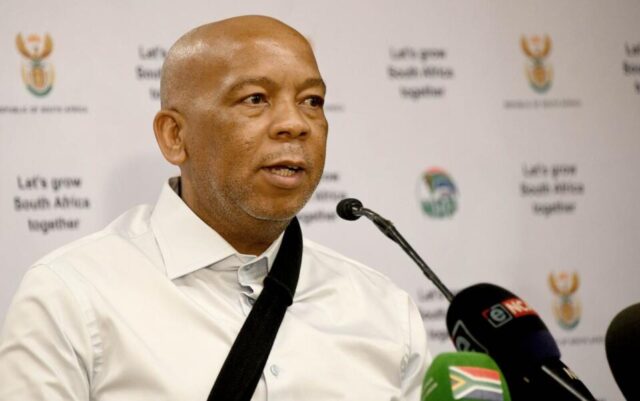Eskom ramped up its rotational load shedding from Stage 4 to Stage 6 over the weekend, the first time since September 15, threatening a dark Christmas season and throwing the projected economic growth in the fourth quarter into disarray.
THE GOVERNMENT’S implementation of the Energy Action Plan has come into question in dealing with the crippling power cuts, which came back with a vengeance following the implementation of Stage 6 load shedding on Black Friday.
Eskom ramped up its rotational load shedding from Stage 4 to Stage 6 over the weekend, the first time since September 15, threatening a dark Christmas season and throwing the projected economic growth in the fourth quarter into disarray.
Political parties were up in arms over the deteriorating generation capacity, calling for the separation of Eskom to allow for private competition in energy generation.
DA MP Kevin Mileham said the return to Stage 6 load shedding exposed the government’s failures to add new generation capacity, or to launch Bid Window 7, in addition to the updated and amended Integrated Resource Plan.
“We need to acknowledge that the priority must be addressing the shortfall of generation. Despite Electricity Minister Kgosientsho Ramokgopa’s frequent reassurances, the energy availability factor of Eskom’s generation fleet is nowhere near 70%,” Mileham said.
“The reality is that the country would be in a far worse situation if it wasn’t for the independent power producers and the rapid growth in private generation for own consumption by business, industrial and residential customers.”
On renewables, Eskom group executive for generation, Bheki Nxumalo, said solar energy was currently contributing 1,000MW to the grid while wind energy was contributing 1,200MW, which is a healthy average.
The power utility lost five generating units, resulting in a shortage of generation capacity as well as the need to replenish its emergency reserves while demand was peaking above 27,000MW.
Ramokgopa said this week’s heat wave in five provinces, low diesel and dam levels of pumped storage power stations were the main reasons for the sudden, intensified power cuts as there had been a spike of 1,500MW in demand.
He said Eskom was sitting at about 14,590MW of unplanned capacity loss factor (UCLF) and vacuum losses of about 807MW.
“We need to ensure that we continue to protect reserves so we are not going to engage them at a high intensity and, as a result, you don’t have the benefit of the 4,600MW that you would ordinarily draw from our emergency reserves.
“By not engaging the reserves, it means that Eskom will be replenishing those reserves and we are going to draw from the grid,” Ramokgopa said.
“That’s why we need the additional capacity. That is why that capacity is not made available to the average consumer. It is for Eskom to consume for purposes of replenishing the dam levels.
“We think that in the next two weeks we will have an additional buffer. We are expecting Unit 2 of Kusile to come online by the end of this month and we expect Unit 5 at Kusile to come online by the third week of December.”
Independent energy expert Lungile Mashele said Eskom’s biggest challenge was unplanned maintenance, which was 33.6% for November, and its 10.4% planned maintenance, which was slightly lower than September and October.
However, Mashele concurred that ambient temperatures affected plant performance, saying that units were more susceptible to breakdowns in extremely hot ambient temperatures.
“The big impact is the cooling system that gets affected and will reduce plant output. It affects the efficiency of the cooling system. There’s then a resultant decline in electrical output, meaning less power on the grid,” Mashele said.
“It’s unacceptable and they need to explain their reserves (both diesel and hydro) and why they were not replenished in time. Yes, the diesel load factor has been averaging 25% for the last seven days but actual and forecast demand has been low.”
According to the SA Reserve Bank, Stage 6 load shedding costs the economy anything upwards of R800 million to R1 billion per day in lost productivity.
The bank last week raised its growth forecasts for 2023, 2024 and 2025 by 0.1% to 0.8%, 1.2% and 1.3%, respectively, but North West University Business School economist Professor Raymond Parsons was doubtful if it could be achieved without committing to reforms.
“This forecast is, however, in particular strongly predicated on Eskom load shedding being reduced over time, to which must now be added the constraints on growth also caused by the Transnet port and rail bottlenecks,” Parsons said.
“This again emphasises the extent to which business confidence and South Africa’s economic performance are largely dependent on the speedy implementation of structural economic reforms in the period ahead.”
– BUSINESS REPORT








